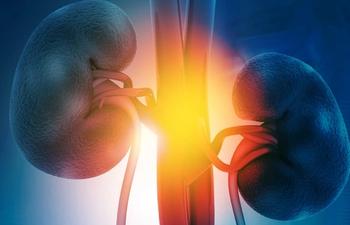
Oncology NEWS International
- Oncology NEWS International Vol 19 No 2
- Volume 19
- Issue 2
Renal Mass Biopsies May Help Patients Bypass Surgery
Using renal mass biopsy to guide treatment decisions for small tumors is cost-effective relative to direct surgery, and can spare many patients unnecessary surgical procedures, according to Massachusetts General Hospital researchers.
Using renal mass biopsy to guide treatment decisions for small tumors is cost-effective relative to direct surgery, and can spare many patients unnecessary surgical procedures, according to Massachusetts General Hospital researchers.
Most small renal masses are detected incidentally in imaging and their current treatment is direct surgery, said lead researcher Pari Pandharipande, MD, a radiologist in the abdominal imaging and interventional radiology department at MGH. Many small renal masses, however, are benign-or indolent if they are malignant-and so less invasive management strategies should be considered, she said.
After constructing a decision-analytic Markov model, the researchers determined surgery was about $3,500 more expensive than biopsy and resulted in a comparable minimally lower life expectancy. Biopsy therefore dominated surgery from a cost-effectiveness perspective (RSNA 2009 abstract SSG09-04).
The researchers assumed a biopsy sensitivity of 90% and specificity of 100%. The researchers also assumed a postsurgery mortality rate of 1.6%. Among imaging-detected masses, 77% were assumed to reflect renal cell carcinoma. Biopsy did not dominate surgery under some conditions, for example, when sensitivity was lower than 78%, when surgical mortality was less than 1%, and when prevalence of renal cancer was greater than 87%.
The researchers used a competing choices cost-effectiveness analysis to compare biopsy with surgery. If one strategy had a lower life expectancy and a higher cost than another, it was considered dominated. If not, an incremental cost-effectiveness ratio was computed and strategy preference was assessed based on an assumed $75,000 per quality adjusted life year societal willingness-to-pay threshold.
The long-term outcomes of life expectancy and lifetime costs after biopsy and surgery were estimated by using a decision-analytic Markov model. The cohort in the base-case analysis was 65-year-old men with incidental renal masses. All patients started with small incidental renal masses and underwent either surgery or biopsy. Patients receiving biopsy could have a true or false-positive or false-negative result. Patients with negative biopsy results underwent CT surveillance for up to five years. Patients with positive and nondiagnostic biopsy specimens underwent direct surgery.
Articles in this issue
almost 16 years ago
Second-line bevacizumab plus chemo improves PFSalmost 16 years ago
Tykerb gains FDA approval for Rx with Femaraalmost 16 years ago
Re-treatment with gefitinib curbs disease progressionalmost 16 years ago
High-dose fulvestrant improves outlook in advanced caalmost 16 years ago
Merkel cell carcinoma patients run increased risk for second canceralmost 16 years ago
Dual-drug vs single-agent aromatase inhibitor therapyalmost 16 years ago
Stereotactic body radiation therapyalmost 16 years ago
Proton therapy needs to prove itself against standard RTNewsletter
Stay up to date on recent advances in the multidisciplinary approach to cancer.


















































































